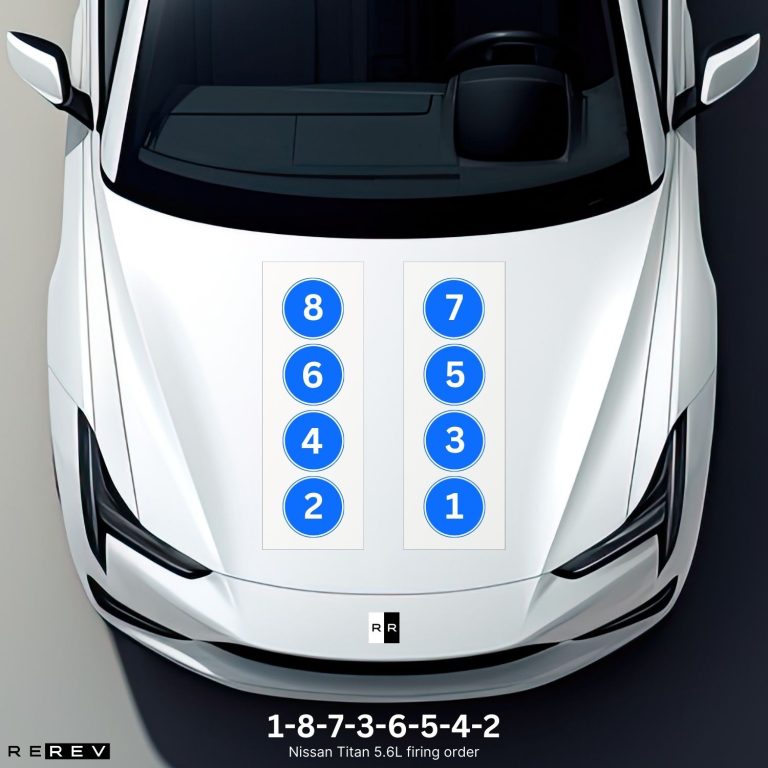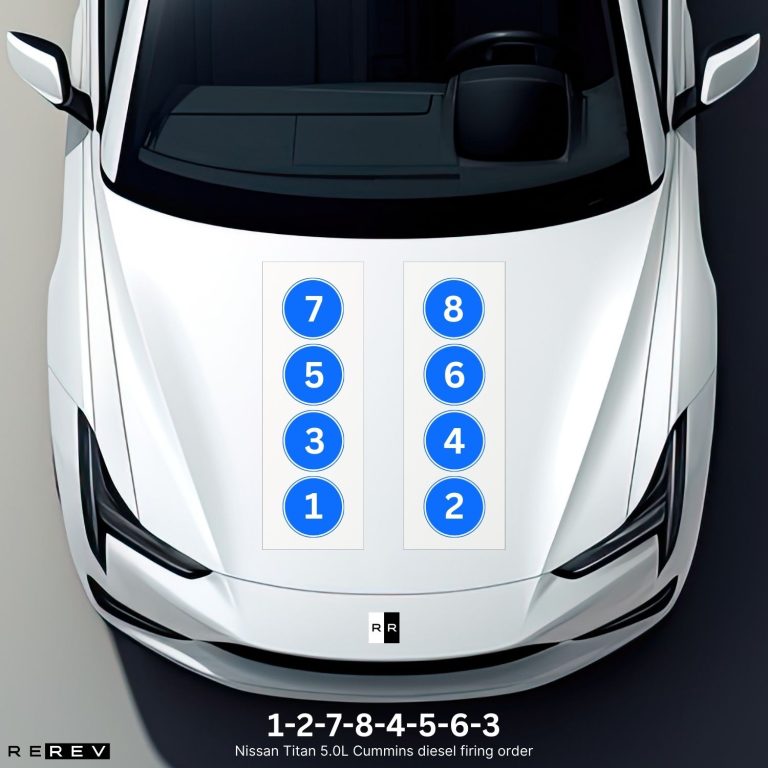Nissan Titan (2003-2023) firing order — diagram & guide

Along with SUV models based on a pickup class like the Xterra, Nissan also introduced its first full-size pickup in the early 2000s. The Titan model established itself as one of the most reliable vehicles in its category and through the two generation models, it offered some remarkable engine options.
As always, these require proper maintenance and we’ve heard of a lot of enthusiasts dedicated to maintaining theirs themselves. So, this guide on the Nissan Titan (2003-2023) firing order should clear some things up for you as we dig deeper into the firing orders and engine specs for all the optional Titan engines.
| TITAN YEARS | ENGINE | FIRING ORDER |
|---|---|---|
| 1st Gen (2003-2015) | 5.6L V8 | 1-8-7-3-6-5-4-2 |
| 2nd Gen (2016-present) | 5.6L V8 | 1-8-7-3-6-5-4-2 |
| 5.0L Cummins diesel | 1-2-7-8-4-5-6-3 |
First-generation Nissan Titan (2003-2015) firing order
The first-gen Titan model only used a single engine option and that’s a 5.6-liter V8 powertrain. So, we’ll focus on that engine specifically since all the first-gen Titan models share the same firing pattern and cylinder configuration.
Nissan Titan 5.6L firing order

For the V8-powered model, the Nissan Titan 5.6L firing order is 1-8-7-3-6-5-4-2 and this engine features the standard eight-cylinder configuration. All the cylinders are divided into two banks with four cylinders each, and the driver’s side cylinders are numbered 1, 3, 5, and 7 front to rear.
The passenger’s side cylinders are also numbered front to rear with the second cylinder being at the front end of the bank, and the rest goes from 4, 6, and eventually 8 at the rear end of the bank.
Second-generation Nissan Titan (2016-present) firing order
The second-gen Titan model didn’t suffer many changes since the 5.6-liter V8 was still in use as the main engine option. However, there was an addition of the 5.0-liter Cummins diesel engine and this one was different from previous Cummins engines since it was a V8, so let’s get to that one next.
Nissan Titan 5.0L Cummins diesel firing order

The Nissan Titan 5.0L Cummins diesel firing order is 1-2-7-8-4-5-6-3 and it features a different cylinder alignment than the petrol V8 engine. So, this time odd cylinder numbers 1, 3, 5, and 7 are ordered front to rear on the passenger’s side, while the driver’s side cylinders are 2, 4, 6, and 8.
The diesel engine doesn’t have spark plugs so that’s a major difference when it comes to maintenance, so the firing order can mainly help with engine stalling issues.
Our take
Nissan Titan has always been one of the most reliable pickup-class vehicles on the US market, so hopefully, this guide has helped you get a sense of the main maintenance specs. We’ve made sure to give you a detailed overview of both the firing order and cylinder layout, so feel free to stand by these details in your DIY undertakes.